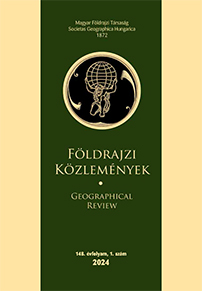A DUNA-TISZA KÖZI HOMOKHÁTSÁG TERÜLETÉS VIDÉKFEJLESZTÉSI KIHÍVÁSAI
Absztrakt
A klímaváltozáshoz való alkalmazkodás ma már mindenütt sürgető feladat, azonban vannak olyan térségek, ahol különösen nehéz a kedvezőtlen hatások enyhítése. Ilyen a Duna-Tisza közi Homokhátság (röviden Homokhátság, vagy DTkH), amely európai viszonylatban is kifejezetten sérülékeny, súlyos környezeti gondokkal küzdő földrajzi régió. A Homokhátság szemiarid övezeteiben évtizedek óta vízhiánnyal küzdenek, és ezzel összefüggésben összetett gazdasági és társadalmi problémák sora jelent meg. Mindezért úgy gondoljuk, hogy a térség fokozott figyelmet, átgondolt területi tervezést és vidékfejlesztési gyakorlatot igényel. Ugyanakkor kutatási tapasztalataink azt mutatják, hogy a térség kihívásaira az elmúlt évtizedekben nem sikerült érdemi választ adni.
Az elmaradásokat látva, munkánk célja, hogy bemutassuk azon tényezőket, amelyek gátolták, vagy lassították a problémák kezelését. A szakemberekkel történt interjúink (n=14), valamint az érintett önkormányzatokkal folytatott kérdőívezésünk (n=56) tanulságai rámutatnak, hogy a régóta fennálló konfliktusokat az Európai Uniós források sem tudták enyhíteni. A területi tervezés hiányosságai és hibái a helyi autonómia csökkenéséhez és a települések polarizációjához vezettek. A fenntartható környezet- és vízgazdálkodásra, valamint klímaadaptációra tett próbálkozások nem hoztak áttörést, így a társadalmi-gazdasági megújulás jelei elsősorban csak egy-egy sikeresebb városban és azok agglomerációjában láthatók. Az eddigi fejlesztések túlzottan gazdasági-, illetve agrár fókuszúak voltak, az egyes ágazatokat pedig külön-külön kezelték, így a komplex térségi kihívásokra nem születtek átfogó megoldások.
Copyright (c) 2024 András Donát Kovács, Jenő Zsolt Farkas, Gábor Vasárus , József Lennert

This work is licensed under a Creative Commons Attribution-NonCommercial-NoDerivatives 4.0 International License.



